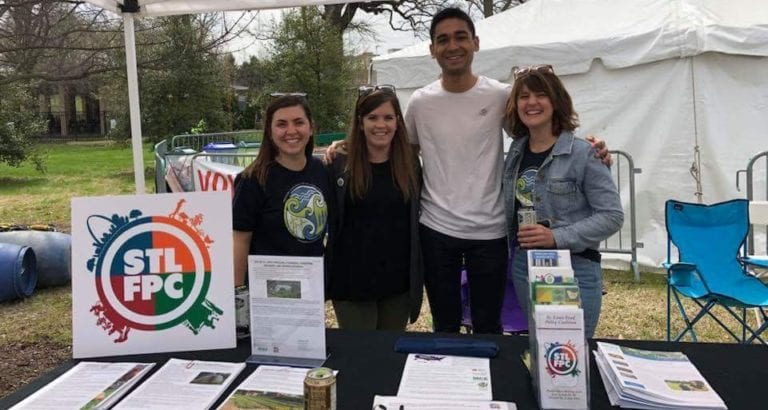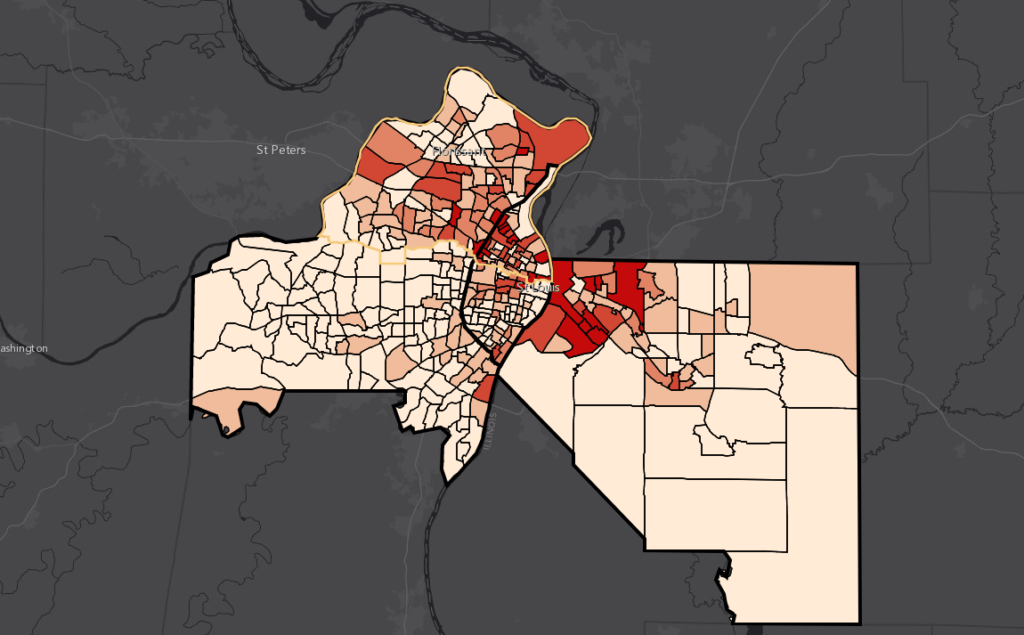Improving food access for the city’s most vulnerable residents is one of the top priorities for the St. Louis Food Policy Coalition (STLFPC), a formal multi-stakeholder entity housed within the Missouri Coalition for the Environment (MCE). As part of this mission, MCE released the St. Louis Food Access Story Map to illustrate the patterns of food access in our region, and its intersectionality with the built environment, race, income, and access to transportation.
Austin Tolani, WashU junior and former MCE intern, played an instrumental role in creating the story map. Using his GIS expertise, he was able to create a dynamic and engaging tool that tells a powerful story about food justice in our region. As you scroll down the page, the factors – income, race, vehicle access, public transportation, etc. – appear successively, bringing a strong focus to North St. Louis: an area where this intersectionality is especially pronounced.
While Austin was already experienced with data collection and cartography, he discovered a whole lot about food access in the process of building the map. “Through reading the literature on food access, working with data, participating in work group meetings of the St. Louis Food Policy Coalition and learning from Melissa Vatterott [MCE’s Food and Farm Director and Austin’s internship supervisor], I was able to develop a much deeper understanding of food access in St. Louis.”
As Austin learned, access to healthy food is not equal for everyone in the St. Louis region. Healthy food access depends on a number of factors such as the affordability of healthy food, the ability of individuals to physically access grocery stores, and even the simple knowledge of nutrition and cooking food.
Austin sees the map as becoming a useful tool in educating the public about food access. “I hope it leads to a deeper understanding of the multitude of factors that affect food access and a greater desire in the St. Louis community to improve food justice in our region.”
The semester-long internship with MCE allowed Austin not only to deepen his understanding of food justice and environmental issues in Missouri, but also to connect with the St. Louis community and create long-lasting relationships. The picture below shows Austin among his MCE’s colleagues volunteering at the 2018 St. Louis Earth Day festival for the STLFPC’s booth.

The objective of the STLFPC to improve food access locally is shared at a regional scale by the One STL targets, which were drafted from the 2017 Sustainability Summit and adopted since by many organizations, including WashU. The goal is to reduce by half the number of census tracks where 70% of residents are considered low income and low (food) access by 2027.
